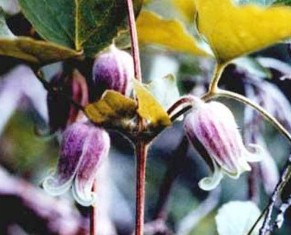- Series:God’s Design, Plants, Transcript English
Genesis 1:11
“And God said, Let the earth bring forth grass, the herb yielding seed, and the fruit tree yielding fruit after his kind, whose seed is in itself, upon the earth: and it was so.”
What’s left to be discovered? Many people have the idea that scientists have discovered just about everything when it comes to everyday subjects. Sure, scientists are searching for cures for many diseases and making discoveries of new atomic particles. But when it comes to common things, say botany, even many scientists think everything has been discovered.
 But a few botanists realize that even when it comes to wild plants in North America, a surprising percentage of these plants still have not yet been discovered, named or described scientifically. One modern botanist who holds this belief has named 118 new plants, discovered 61 distinctive varieties and 57 recorded plants that have been named as new species. While some of the newly discovered plants that have been found relatively recently are in remote locations, many are seen by people every day. A member of the lily family that was first described in 1972 grew only 10 miles from downtown San Francisco. What is now known as Morefield’s leather flower was discovered in 1982 on a vacant lot in suburban Huntsville, Alabama. Botanists working in this field estimate that 5 percent of North American plants still remain either undescribed or undiscovered.
But a few botanists realize that even when it comes to wild plants in North America, a surprising percentage of these plants still have not yet been discovered, named or described scientifically. One modern botanist who holds this belief has named 118 new plants, discovered 61 distinctive varieties and 57 recorded plants that have been named as new species. While some of the newly discovered plants that have been found relatively recently are in remote locations, many are seen by people every day. A member of the lily family that was first described in 1972 grew only 10 miles from downtown San Francisco. What is now known as Morefield’s leather flower was discovered in 1982 on a vacant lot in suburban Huntsville, Alabama. Botanists working in this field estimate that 5 percent of North American plants still remain either undescribed or undiscovered.
God created such a variety of plants that modern science still has not even discovered all the living plants around us. This truth should tell us that modern science cannot tell us that God did not create this wonderful variety and beauty.
Prayer:
Father, we thank You for the variety and beauty that You have built into the plants around us. In Jesus’ Name. Amen.
Notes:
Susan Milius, “Unknown Plants Under Our Noses,” Science News, January 2, 1999, v. 155, p. 8. Photo: Clematis morefieldii, Morefield’s leather flower.
